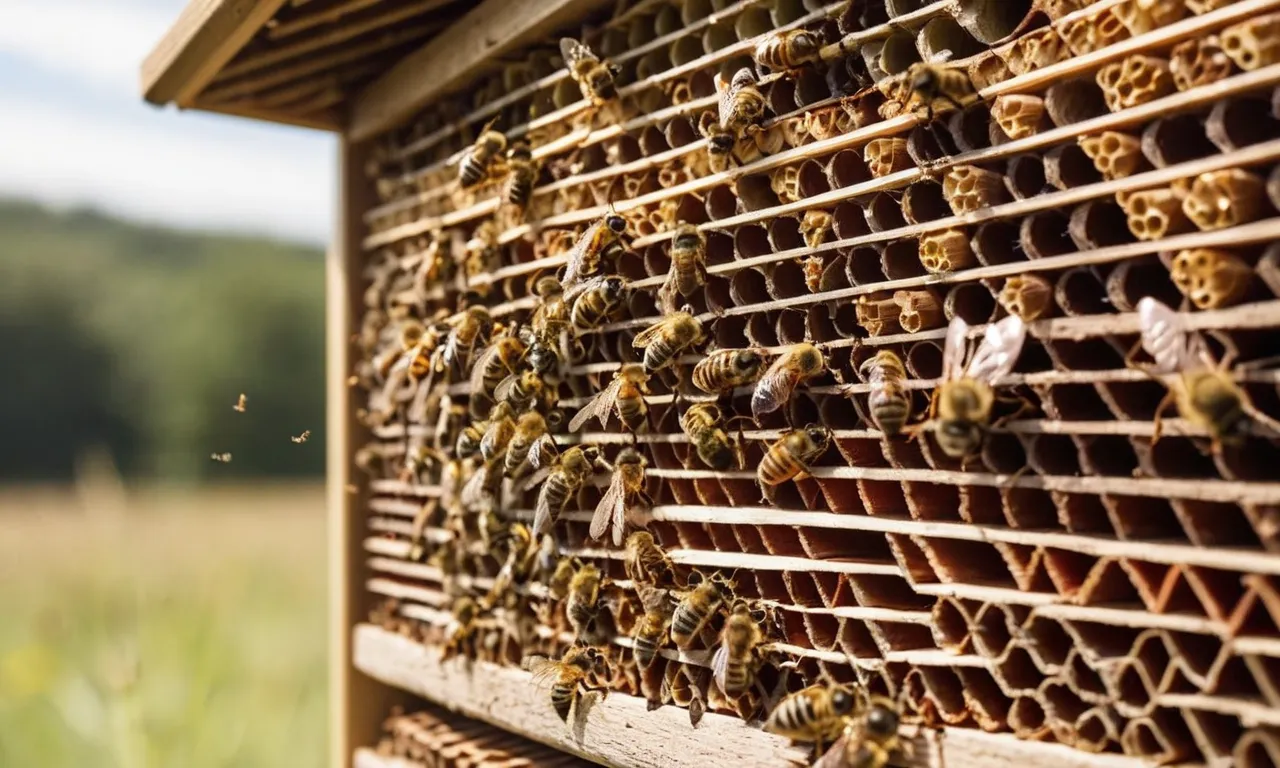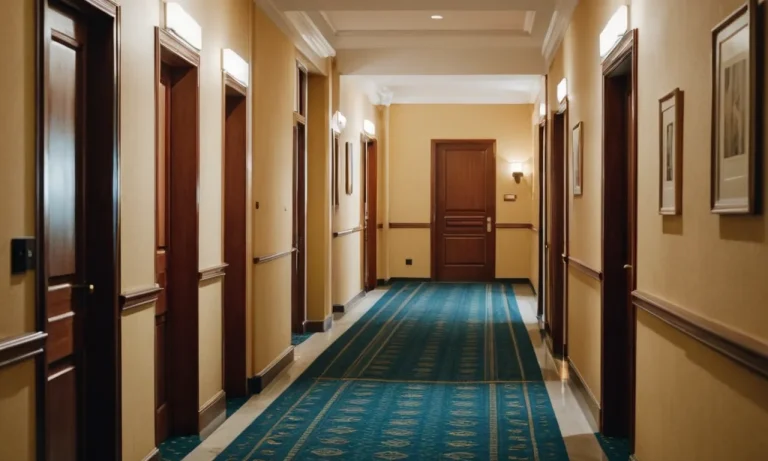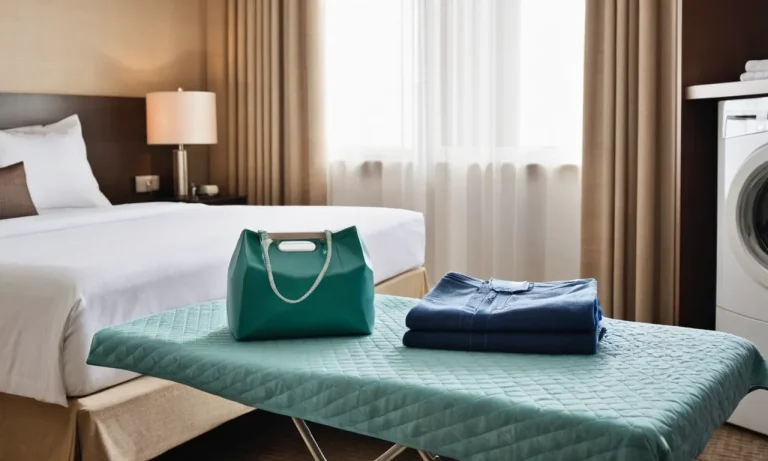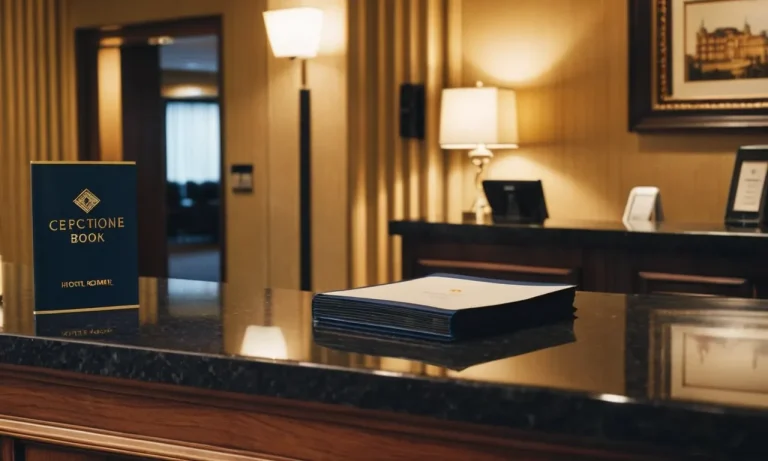Do Bee Hotels Attract Wasps? A Comprehensive Guide
Bee hotels, also known as bee houses or bee bunkers, have become increasingly popular among gardeners and nature enthusiasts as a way to provide nesting sites for solitary bees. However, one common concern that arises is whether these structures might inadvertently attract unwanted guests, such as wasps.
If you’re short on time, here’s a quick answer to your question: Bee hotels can potentially attract wasps, but the risk is relatively low if the hotel is designed and maintained properly.
In this article, we’ll delve into the intricacies of bee hotels and their relationship with wasps. We’ll explore the factors that influence wasp attraction, provide tips for minimizing the risk, and discuss the benefits of having a bee hotel in your garden.
Whether you’re a seasoned gardener or a curious nature enthusiast, this comprehensive guide will equip you with the knowledge you need to make an informed decision.
Understanding Bee Hotels and Their Purpose
What are bee hotels?
Bee hotels, also known as bee houses or insect hotels, are human-made structures designed to provide nesting sites for solitary bees and other beneficial insects. These unique habitats mimic the natural nesting environments that solitary bees prefer, such as hollow plant stems, holes in dead wood, or even crevices in walls.
Bee hotels come in various shapes and sizes, ranging from small wooden boxes to elaborate structures resembling miniature apartment buildings. They are typically filled with a variety of nesting materials, including bamboo canes, hollow reeds, cardboard tubes, and even drilled holes in wood blocks.
The importance of solitary bees
Solitary bees play a crucial role in our ecosystems as efficient pollinators. Unlike honeybees, which live in large colonies, solitary bees are independent and do not produce honey. They are responsible for pollinating a wide range of plants, including many fruits, vegetables, and wildflowers.
According to the U.S. Forest Service, solitary bees are often more effective pollinators than honeybees due to their unique behaviors and body structures. For example, some solitary bees are “buzz pollinators,” which means they vibrate their bodies to release pollen from flowers with tightly closed anthers, such as tomatoes and blueberries.
Benefits of bee hotels for gardens and ecosystems
Installing bee hotels in gardens and other green spaces offers numerous benefits for both the environment and humans. First and foremost, they provide much-needed nesting habitats for solitary bees, which have been facing challenges due to habitat loss and urbanization.
By supporting these important pollinators, bee hotels contribute to maintaining healthy and diverse ecosystems. Additionally, they can enhance pollination rates in gardens, leading to increased fruit and vegetable yields.
According to a study published in the Scientific Reports journal, bee hotels can increase the abundance and diversity of solitary bees in urban areas by up to 25%. 👏 Furthermore, bee hotels serve as educational tools, allowing people to observe and appreciate the fascinating lives of these industrious insects.
They can be a great way to engage children and raise awareness about the importance of pollinators and their conservation. 😊
By providing nesting sites and supporting solitary bee populations, bee hotels play a vital role in promoting biodiversity, ensuring successful pollination, and fostering a greater appreciation for these amazing creatures.
With their growing popularity, these unique structures are becoming an increasingly common sight in gardens, parks, and urban green spaces worldwide. 🎉
Do Bee Hotels Attract Wasps?
Bee hotels, also known as insect houses or nesting blocks, are designed to provide shelter and nesting sites for solitary bees and other beneficial insects. While these structures can be a great way to support pollinator populations, there is a common concern that they may also attract unwanted guests, such as wasps.
The answer to whether bee hotels attract wasps is not a simple yes or no, as several factors play a role.
Factors that influence wasp attraction
- Location: The placement of the bee hotel can significantly impact the likelihood of wasp activity. Wasps are generally more attracted to areas with abundant food sources, such as gardens with ripe fruits or nectar-rich flowers.
Placing the bee hotel away from these areas can help reduce wasp interest.
- Design and materials: The construction of the bee hotel can also influence wasp attraction. Certain materials, like untreated wood or bamboo, may be more appealing to wasps for nesting purposes. Additionally, the size and shape of the nesting holes can determine which insects are attracted.
- Competition for nesting sites: Both solitary bees and wasps may compete for suitable nesting cavities. If the bee hotel is already occupied by bees, it may deter wasps from attempting to establish their own nests within the structure.
Wasp behavior and nesting habits
To understand the potential risks associated with wasp presence, it’s important to understand their behavior and nesting habits. Most wasps are predatory insects that feed on other insects, including bees. However, not all wasps pose a threat to bee populations.
According to the U.S. Forest Service, some species of solitary wasps are actually considered beneficial pollinators and are harmless to humans.
Wasps typically build their nests in sheltered areas, such as under eaves, in tree cavities, or in the ground. They may be attracted to bee hotels due to the presence of suitable nesting cavities, but they are generally not aggressive unless their nest is disturbed.
If a wasp does establish a nest within a bee hotel, it’s best to leave it alone and avoid disturbing the colony.
Potential risks of wasp presence
While the presence of wasps in a bee hotel is not necessarily a cause for alarm, there are some potential risks to consider. If a wasp colony becomes established, it may deter solitary bees from using the hotel, reducing its effectiveness as a pollinator habitat.
Additionally, some wasps may prey on bee larvae or adults, impacting the local bee population.
Another concern is the risk of stings, particularly if the bee hotel is located in an area frequented by people. While most wasps are not aggressive unless provoked, accidental disturbances can occur, leading to defensive behavior and potential stings.
This risk is heightened if the wasp colony is located in a high-traffic area or if children or pets are present.
To mitigate these risks, it’s essential to monitor the bee hotel regularly and take appropriate action if a wasp colony becomes established. This may involve relocating the hotel to a more suitable location or seeking professional assistance for safe removal of the colony.
Remember, wasps play an important role in the ecosystem, and their presence should be respected while taking necessary precautions to ensure the safety of both humans and pollinators.
Minimizing the Risk of Wasp Attraction
While bee hotels are designed to provide nesting spots for solitary bees, there is a risk of attracting unwanted guests like wasps. However, with proper precautions and maintenance, you can minimize this risk and ensure a safe haven for your buzzing buddies. Let’s dive into some effective strategies:
Proper bee hotel design and placement
The design and placement of your bee hotel play a crucial role in deterring wasps. Opt for a compact design with a narrow entrance hole, as wasps prefer larger openings. Position your hotel in a sheltered area, away from high-traffic zones, as wasps are attracted to disturbances.
According to the US Forest Service, bee hotels should face east or southeast to receive morning sun, which is favored by many solitary bee species.
Maintenance and monitoring tips
Regular maintenance is key to keeping wasps at bay. Clean out the bee hotel after each nesting season to remove any debris or old nests that could attract wasps. Inspect the hotel periodically for signs of wasp activity, such as chewed-up wood or mud nests.
If you spot any wasp nests, remove them promptly before they become established. Consider using a monitoring camera or app like BeeTheCure to keep an eye on your hotel without disturbing the residents.
Natural deterrents and preventive measures
Nature offers some effective deterrents to keep wasps away from your bee hotel. Plant herbs like mint, eucalyptus, or citronella near the hotel, as their strong scents can repel wasps. You can also create a DIY wasp repellent spray using essential oils like peppermint or clove oil.
Encourage natural predators like birds or spiders to take up residence nearby, as they can help control wasp populations. Finally, consider using physical barriers like mesh screens or wasp traps as a last resort if all else fails.
By following these tips, you can significantly reduce the chances of wasps invading your bee hotel and ensure a safe, thriving environment for your pollinator pals. Don’t let the fear of wasps deter you from creating a welcoming oasis for these essential insects – with a little preparation and vigilance, you can have a successful bee hotel that contributes to the health of your local ecosystem.
Happy beekeeping! 👏🐝🌺
Balancing Bee Hotels and Wasp Management
Coexistence strategies
Bee hotels and wasp nests can coexist harmoniously if managed properly. While bees are generally harmless pollinators, some wasps can be aggressive and pose a sting risk. The key is to create a balanced environment where both species can thrive without causing issues.
One effective strategy is to place bee hotels at least 20 feet away from high-traffic areas, as recommended by experts at the U.S. Forest Service. This minimizes potential encounters with wasps that might be attracted to the bee hotels.
Another approach is to incorporate wasp-deterring plants like mint, eucalyptus, or wormwood near the bee hotels. These aromatic plants can discourage wasps from nesting too close. Additionally, regularly monitoring the bee hotels for wasp activity and promptly removing any nests can prevent infestations.
According to a study by the Xerces Society, a leading pollinator conservation organization, proper maintenance can reduce wasp occupancy in bee hotels by up to 80%.
When to seek professional assistance
While coexistence is often achievable, there may be situations where professional assistance is necessary. If you notice an unusually high number of wasps or aggressive behavior around the bee hotels, it’s advisable to consult a local pest control expert.
They can assess the situation and recommend safe removal methods without harming the beneficial bee population. Additionally, if you suspect a wasp nest near the bee hotel poses a significant risk to people or pets, it’s best to have professionals handle the removal to avoid potential stings or injury.
Promoting a healthy ecosystem
Ultimately, bee hotels and wasp management should aim to promote a healthy ecosystem where both species can thrive. Bees play a crucial role in pollination, supporting plant diversity and food production, while wasps contribute to pest control and nutrient cycling.
By understanding their behaviors and implementing thoughtful strategies, we can strike a balance that benefits the entire ecosystem. Consider providing diverse floral resources, water sources, and nesting sites to attract a variety of beneficial insects, creating a vibrant and sustainable environment for generations to come.
As the USDA Natural Resources Conservation Service emphasizes, “A diverse pollinator community is essential for maintaining a healthy, productive landscape.” 😊
Conclusion
Bee hotels can be a wonderful addition to any garden, providing essential nesting sites for solitary bees and contributing to the overall health of the ecosystem. While the risk of attracting wasps is a valid concern, it can be effectively minimized through proper design, placement, and maintenance of the bee hotel.
By understanding the factors that influence wasp attraction and implementing preventive measures, gardeners and nature enthusiasts can strike a balance between supporting bee populations and managing potential wasp presence.
Ultimately, promoting a diverse and thriving ecosystem is key to creating a harmonious environment for all its inhabitants.







